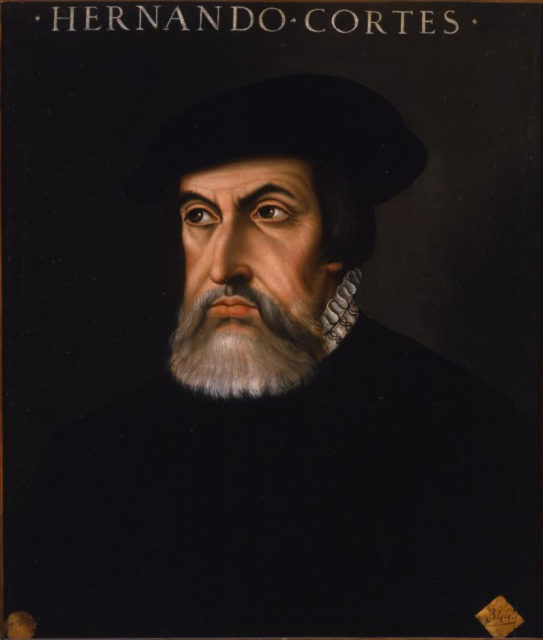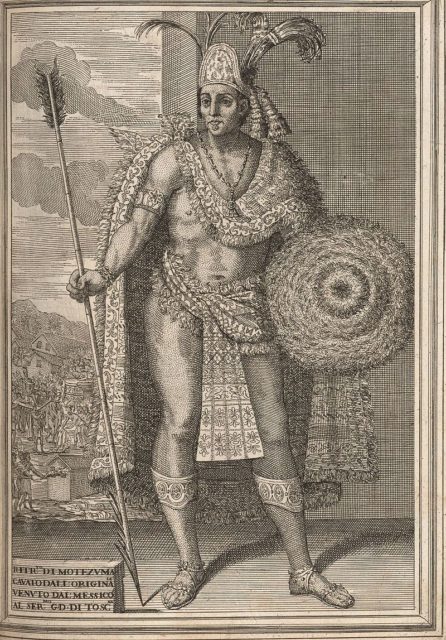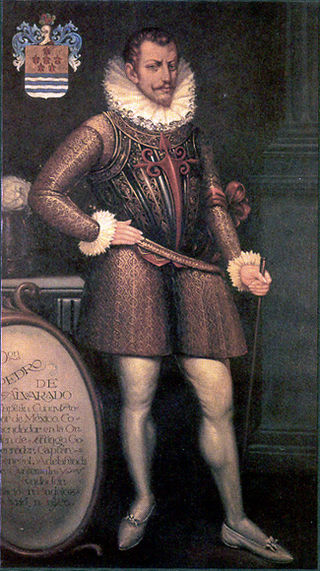Cortés and his conquistadors are well known today for their activities in the Aztec Empire (Mexico). Hernán Cortés led a band of approximately 600 conquistadors on an assault on the Aztec Empire in 1519.
In three short years, the capital city of Tenochitilan was destroyed, and Emperor Montezuma II was dead. The Spaniards called this new area they had claimed “New Spain.” Thousands of pounds of gold, jewels, artwork, and silver were stolen along with the way.

Different cultures view wealth differently, and this often leads to conflict. For the Spanish of the 1500s gold and silver were especially valued. They preferred to carry gold and silver coin. The Aztecs, though, valued other things higher than gold or silver, such a brightly-colored feathers, and they created stunning clocks from such feathers and amazing headdresses that spoke of wealth. Jewels were treasured, even those such as jade and turquoise. Surprisingly, cotton was highly prized, and garments made from it were a sign of wealth. Gold and silver were used for ornaments and decorations, plates were made from gold, and jewelry used both gold and silver. The people of the Aztecs were merchants and traded mainly by bartering; cacao beans were used as a form of simple currency.
In April of 1519 Cortés and his crew landed near where Veracruz sits today. He had already visited the Mayan area of Potochan where he found the valuable interpreter Malinche (Dona Marina), one of a group of slaves given to Cortés from a Mayan lord. It is claimed that without her, the Spanish would not have been able to understand the language of the Aztecs. They founded a small settlement and became friendly with the coastal towns nearby. Cortés agreed to become allies with these people, and they gave him many gifts of gold, feathers, and ornaments. Cortés and his Spanish backers must have been impressed by the gold and that it seemed very easy to get their hands on it. Emissaries from Montezuma II came regularly, laden with gifts. The gifts at first were small, such as obsidian mirrors and items made of gold and mother of pearl. As Cortés’s interest in gold became apparent, larger golden pieces such as a six-and-a-half foot wheel came his way, and also a Spanish helmet filled to the brim with gold dust.
Cortés eventually decided to send some of this treasure back to the King of Spain, who was entitled to a fifth of any treasure. This was also to calm the waters, as the backing of the crown he had been receiving was becoming unstable. An extensive list of what was sent survives today and details everything sent on that ship. From the list, historians believe that the King of Spain did not get his fifth but only a tenth of the treasure gathered so far by Cortés.

Between July and November of 1519 Cortés was on the move, making his way to Tenochtitlan. Along the way, they accumulated more treasures from Montezuma II, gifts from the leader of Tlaxcala who became an ally of Cortés, and plunders from the Cholula Massacre.
Arriving at Tenochtitlan, they were made welcome by the ruler Montezuma II. They were given a compound of their own to use that was a lavish palace of Axayacatl, the sixth Emperor of the Aztecs.
A week after arriving in the city they turned on Montezuma II and imprisoned him within their compound. The Spaniards demanded gold and his people obeyed their captive leader and brought all of it to Cortés. The city was rapidly being emptied of all its treasures, but this wasn’t enough for Cortés; he demanded to know where the gold came from. The captive Emperor told them where it could be found in the rivers and streams of the Empire.

The richness of the Empire had not gone unnoticed, and in May 1520 Cortés had to fight off a rival conquistador army of Panfilo de Narvaez. He left behind his trusted Lieutenant Pedro de Alvarado, which was a huge mistake. Unbeknownst to Cortés, while he was gone his Lieutenant ordered the massacre of thousands of Aztec nobles who were attending the feast of Toxactl. This created an uprising, and when Cortés returned he found his men under siege.
They had to flee. The King’s fifth of the spoils and Cortés’s were loaded onto horses, and the rest of the plunder went free to anyone who wanted it. Greed won out over common sense and his men loaded themselves down with gold. As they tried to flee the city only those carrying little or those willing and able to drop their loads made it out alive. The attack was called the “Noche Triste” (Night of Sorrows). Most of the treasure was lost, including the King’s and Cortés’s fifths.
A few months later, after the Spaniards had regrouped, they again took Tenochtitlan and this time they held it firmly. Most of the treasure was completely gone, never to be seen again. Even when the new Emperor Cuauhtemoc was tortured, the bulk of it was never found, as he refused to say a word. Cortés split up the remainder, setting aside the fifth for the King and Cortés, and here Cortés began to make large payments for goods and services.

When he finally paid his men, they were furious to discover for all their time and effort they would have made more as honest laborers. Cortés eventually began to buy them off with further expeditions, and for others, he gave large areas of land to rule called “encomienda”.
Historical documents support the claims made by his men that he had more treasure than he officially declared. Emperor Cuauhtemoc was taken from the city and later killed. He was the last Emperor of the Aztecs, About Education reported.
Cortés and his men had managed to take out thousands of pounds worth of gold out of the Aztec Empire; even with his losses at the siege. Unfortunately, the artworks of gold and jewelry were melted down, so there are very few examples of them left in the world today. It was said by the Spaniards who did see the creations in gold that the goldsmiths of the Aztecs were better craftsmen than the European ones.

The rich conquests by Cortés caused many expeditions to flood into the area, in the hope of making as rich a find.
Read another story from us: Cortes: One of the greatest Conquests of Mesoamerica
By this time the Inca had also been plundered, and no more great Empires remained.
